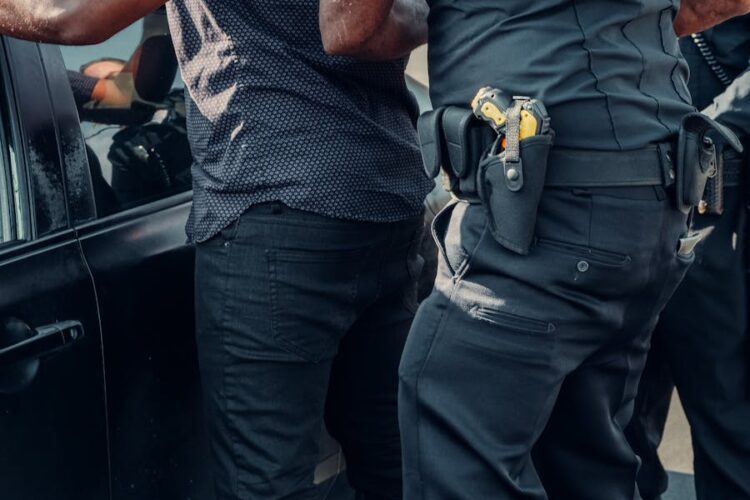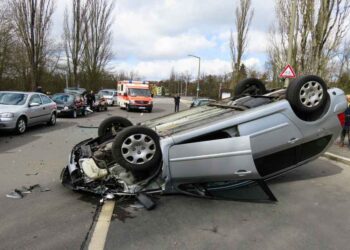When a Pennsylvania State Trooper hit a loose horse multiple times with his car and pinned it to the pavement where another officer euthanized it, he probably was surprised to see himself getting charged with animal cruelty. After all, he was doing what he felt was necessary when a horse was running loose into traffic. How he handled it is where the conflict arises – was ramming the horse repeatedly then pinning it with his car excessive force? Was there another, better method he could have used to handle it? According to the DA, Chris de Barrena-Sarobe, his defense was legally sound and he had to drop the charges.
It begs the question, though, what do law enforcement officers have to do in order to avoid animal cruelty? While police are under earned scrutiny for their excessive force against humans, it’s worth looking at their treatment of animals as well. Legally, animals are counted below humans, but that doesn’t mean they don’t count at all. Their actions towards animals are subject to the same legal consequences if those actions are deemed excessive, unnecessary, or intentionally harmful.
Excessive Force
Let’s go through the scenario in which Corporal Michael Perillo, the Pennsylvania State Trooper, ended up hitting and crushing a horse with his police vehicle, which was initially considered excessive force – not an unreasonable assumption, frankly. In December 2012, a horse had gotten loose and caused an accident in which it was struck by a sedan. Two troopers unsuccessfully attempted to wrangle the horse with a makeshift lasso made out of jumper cables before Perillo had arrived on the scene. Because the horse had made its way into traffic and was frightened and out of control, the risk of danger to drivers was far higher, as was the liability risk. Just ask a Philadelphia car accident lawyer. And, legally speaking, we value human life over animal life.
The way in which Perillo stopped the horse, however, was excessive and “deeply disturbing,” according to Chester County DA Christopher de Barrena-Sarobe. Was there a less troubling way in which Perillo could have stopped the horse? Maybe. Does he have a valid defense? Indeed he does. Because he can successfully argue that he was acting within the scope of his job, and without evidence to the contrary, the charges of animal cruelty were dropped.
Neglect
Neglect is pretty straight forward. The act varies state-by-state and involves failing to provide necessary food, water, shelter, or medical care as needed, resulting in injury or death. For example, if an officer leaves their police dog in a hot vehicle without ventilation or water, well, we’ve read too many stories on that not to know what happens. Acts like that are considered neglect and carry hefty legal consequences.
Intentional Harm
Intentional harm is even more straightforward. Deliberate acts of violence or harm without justifiable cause is considered intentional harm. If an officer shoots a dog that has not attacked them and is perceivably not a threat, then that would justify animal cruelty charges. In 2013, a Los Angeles police officer shot and killed a dog during its owner’s arrest. The incident was captured on video and went viral, prompting public outrage. A civil claim was later filed with the police department and the three officers involved were sent to desk duty. Police usually have broad leeway when it comes to using their weapons against a perceived threat, but when evidence proves otherwise, that leeway tends to disappear.
Improper Euthanasia
In order to ensure minimal suffering, there are specific legal and humane standards that determine proper euthanasia. These methods are also evolving as we learn more about how to best minimize suffering. If a police officer, instead of using an intentionally aimed firearm or veterinary-approved method, uses a blunt instrument as a means of euthanasia then they could and would be charged with animal cruelty. Bludgeoning an animal to death does not minimize suffering, it exacerbates it.
Failure to Act
Failure to Act is more difficult to prove as it deals with inaction rather than action. If an officer observes animal cruelty either in the act or evidence of and fails to report it or intervene, then they could potentially face charges. They have a duty to act in the protection of animals and failure to perform that duty can land them with some consequences.
Yes, There Are Consequences for Animal Cruelty
Cops are given a very broad scope within which they can act fatally. Thankfully, the emergence of body cams and smartphone cameras has made it easier to limit that scope when they go over the line. We focus, rightfully so, on humans being the victims of police abuse. But we also need to focus more on police abuse of animals. Perillo’s actions against a loose horse were disturbing but not without a valid defense. It seems that he was right on the line.
If there was evidence of a less cruel way to stop a loose horse, Perillo could very well have faced legal consequences. These consequences range from desk duty to misdemeanors to felonies, depending on the severity of the actions and the state they take place in. Beyond legal consequences, the reputation of being a cop that hurts animals is arguably worse than one that hurts humans. Despite our laws placing humans above animals, humans tend to care much more when an animal is the victim of violence.
Law enforcement officers are expected to serve and protect all members of the community, including animals. I mean, it’s written on their squad cars, after all. As we’ve developed as a society, we’ve learned so much more about the ethical and moral treatment of animals. What was acceptable treatment thirty years ago is not necessarily acceptable treatment today. Police departments usually provide training on handling animals humanely and effectively, aside from just shooting their way out of a problem. There is obviously a lot of work to do in improving the actions of police officers and the treatment of animals is one such way. It shouldn’t be that a state trooper feels that he needs to repeatedly run over and pin a horse with his car. That, it seems, should be excessive force.










